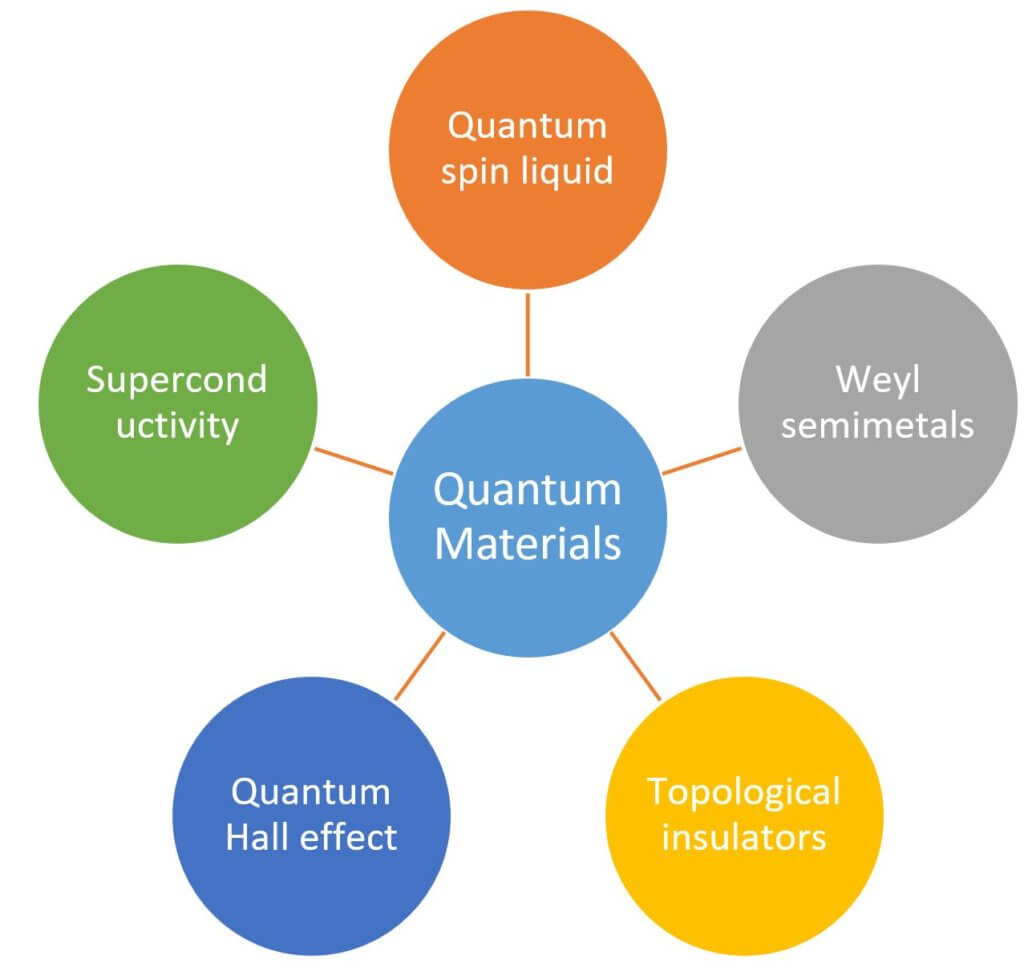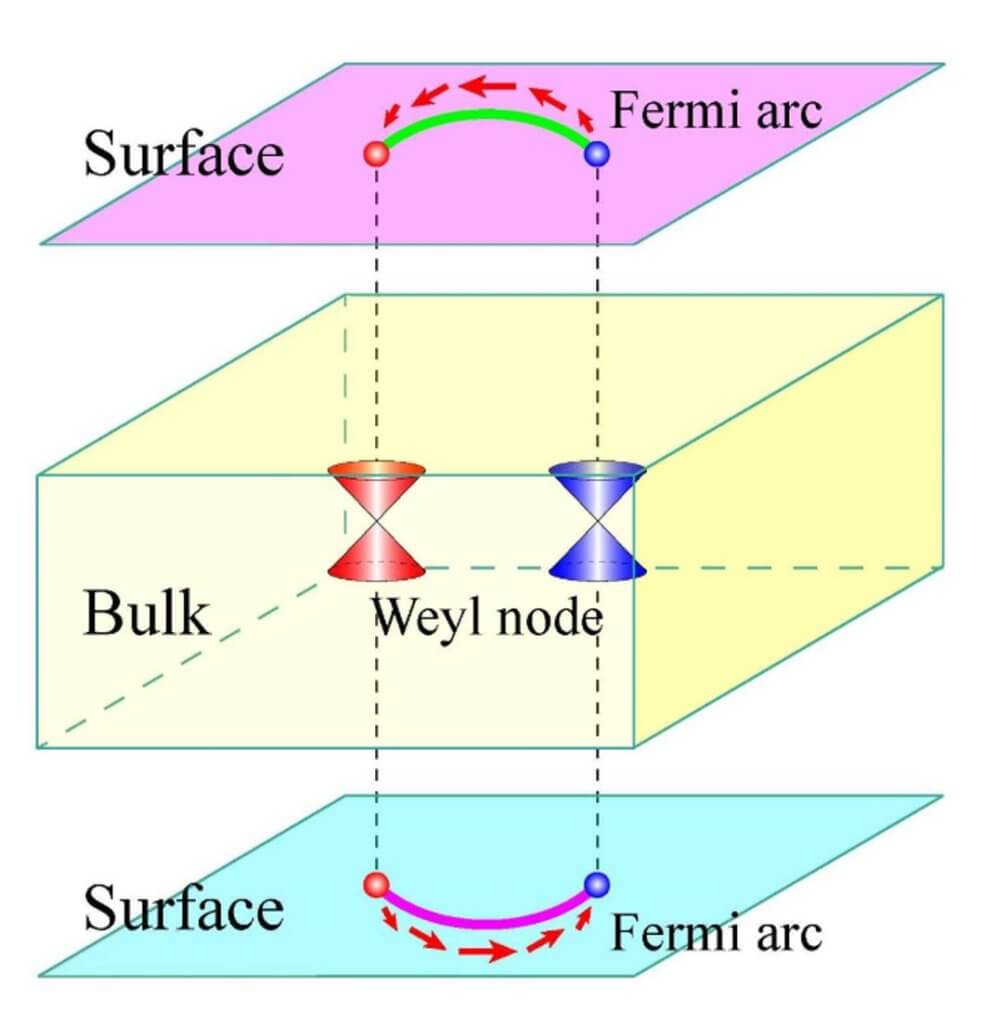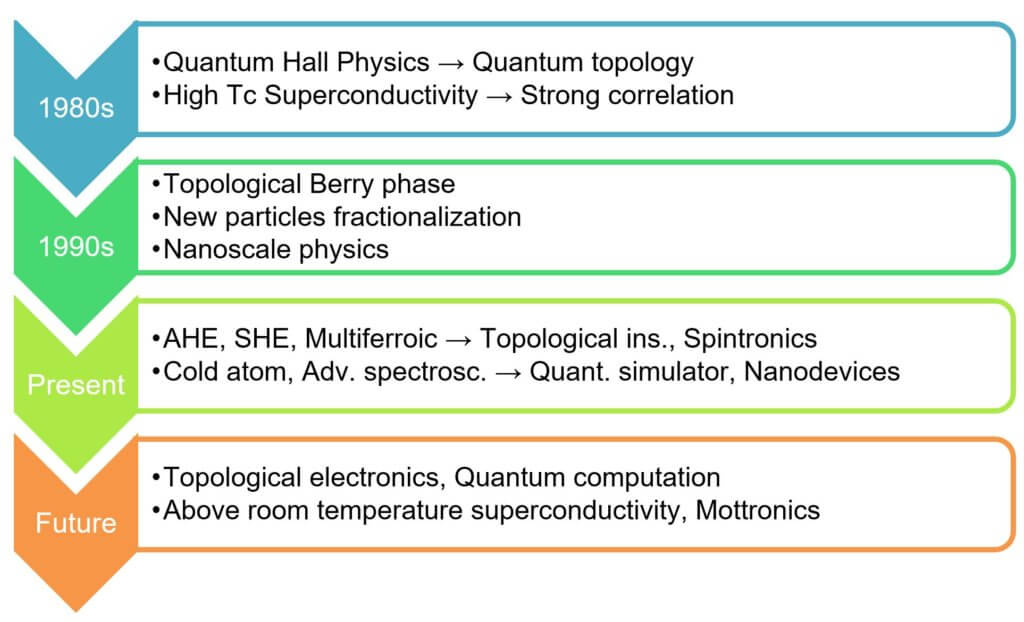Perhaps the most vibrant areas across the landscape of physics research today lie here in the study of “Quantum Materials”. They are to be the steppingstone toward quantum computing and the frontier of new and exciting physics.

But what are the quantum materials and what makes them so special?
Recent discoveries of materials in which macroscopic properties originate explicitly from quantum many-body effects can open a new landscape for the development of transformational technologies not reachable by classical or even nanostructured materials.
- 2005 Graphene – Dirac Fermions
- 2012 Majorana Fermions – No energy, charge, or spin
- 2015 Weyl Fermions – Weyl Semimetals are more interesting than topological insulators !

Certain materials such as topological insulators, Weyl semimetals, superconductors, or even graphene demand a quantum explanation for their properties. These quirky substances are dubbed quantum materials. They come in various shapes and compositions from ceramic like lanthanum copper oxides to 2D sheets of atoms like graphene. One thing that they all share and gives rise to their strange properties is the electron confinement along one or more dimensions. As a result of this geometrical constraints, electrons behave collectively rather than independently. Therefore, instead of a single electron transport, we have a bunch of electrons (let’s call them quasi-particles) that give rise to fascinatingly much different behavior like superconductivity, the formation of mass-less fermions, or the seemingly impossible magnets with just a single pole, like only the South Pole!
For particle physicists, some of these quasi-particles are quite familiar because they are analogous to subatomic particles predicted by some complex theories, and could be made only through the use of atom smashes like the large hadron collider. So quantum materials provide a “new laboratory” for exploring fundamental physics while at the same time pushing the limits of applied material science – that’s what makes the study of quantum materials so special!
What is their Scientific Impact?
Quantum materials provide the most logical pathway to connect three key components of science and technology: matter, energy, and information. The key concepts, historical progress, and projected scientific impacts of various quantum materials are summarized in the diagram below.

Topological current in quantum materials enables the next-generation electronics with nonreciprocal responses based on the transmission of the generalized currents, hence information. Topological protection also provides robust quantum states for quantum computing. Dissipationless electronics using topological currents and quantum spins, magnetoelectronic integrated circuits, high-density storage devices, above-room-temperature superconductors, and quantum computing are some of the most important components of the contribution to the infrastructure for future energy and information technologies. Both theoretically and experimentally, these are some of the most challenging problems, but they offer a very fertile field with revolutionary technological impacts!
How close are we really to making them work for us?
Today, there are several prime manifestations such as Mott transition, high-temperature superconductivity, topological superconductivity, colossal magnetoresistance, giant magnetoelectric effect, and topological semimetals although the biggest contribution of quantum materials has to wait for further developments. Indeed, these phenomena pave the way for next-generation quantum electronic and computational technologies.